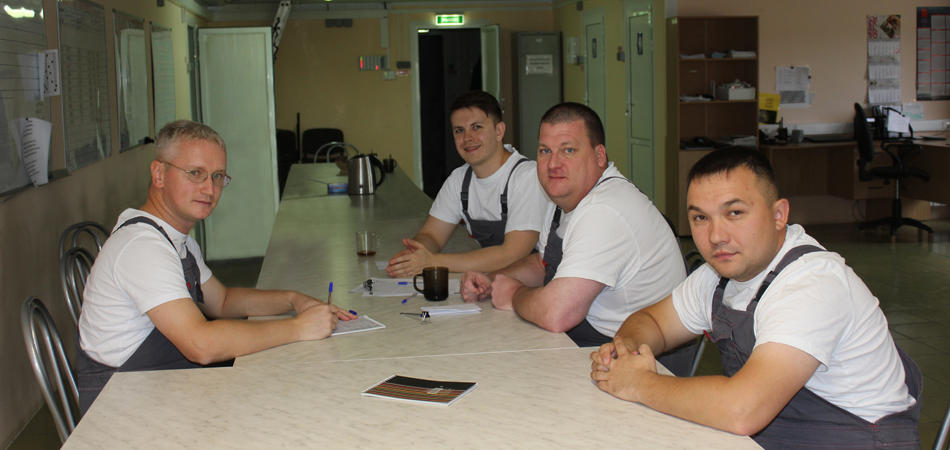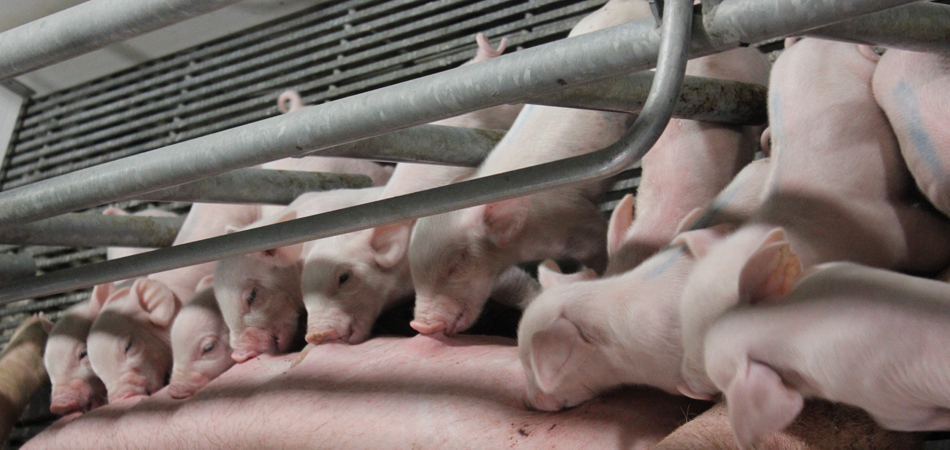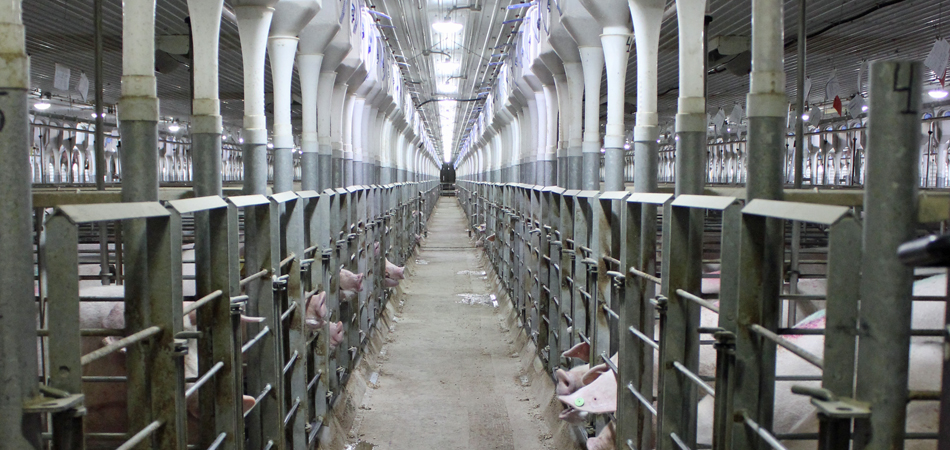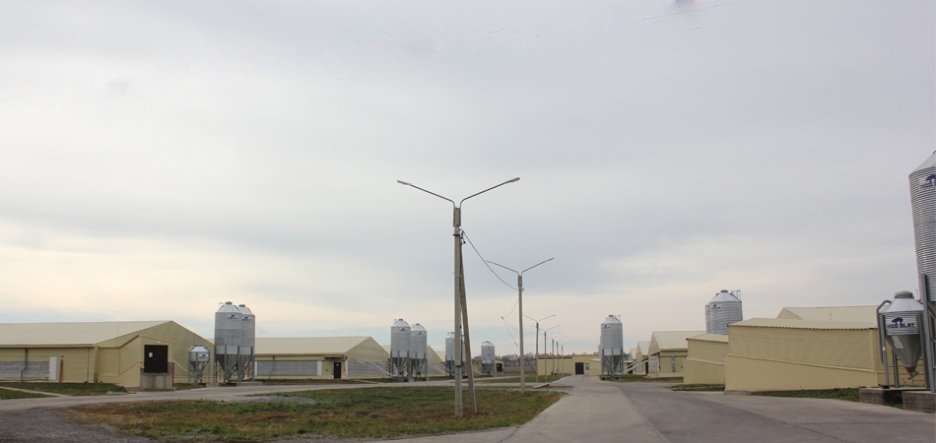Cherkizovo Group discusses factors influencing their choice of equipment for their most recent building project.
The following article contains excerpts from an interview with Brad Heron, Executive Manager of Pig Production for the Cherkizovo Group. Cherkizovo is one of Russia’s largest pork producers. Joining Brad for this interview was production manager, Alexander Busov. Ivan Svinarev from Donskoy State Agrarian University conducted the interview.

Ivan: Having experience in working with different building companies, which factors could you point out that influenced your choice of facility design?
Brad: Well, chimney ventilation was the most common type of system in Russia. Based on our experience we wanted to make changes and go with a more western type of tunnel ventilation. We felt that this design of ventilation would be more productive for us. We had some experience with Hog Slat in America. In addition, they had a good operation in Russia, had already invested in their supply chain and their equipment was readily available. As we began the operation and did the expansion for the sow barns and finishing sites, we felt it was an obvious choice.
Ivan: This cooperation can be divided into two big components: the equipment itself and production practice. Do I understand it right that the production practices in this project are Cherkizovo's ideas, not Hog Slat’s? Or is this a combination of both companies?
Brad: When I came here the guys had already started the relationship with Hog Slat. Our first order of business was to standardize all the operating procedures based on the best practices from throughout the world. In some cases, that information came from Spain and sometimes from North America.
We wanted to be in a position that within 3 to 5 years we could start to benchmark ourselves against the world. Our owners wanted to be the best, not only in Russia but also in the world. We felt like any new construction, especially Wean to Finish buildings, needed to be the tunnel ventilated.

Some of our initial challenges began when we started to increase the productivity in the sow barns as the original buildings were only designed to handle 2800 pigs a week. We increased productivity and pretty soon we were weaning 3100 pigs with a goal of 3800 to 4200 pigs a week. These original models no longer fit.
What happens when you have a sow barn that outperforms the size of the nursery and finisher? You have to build more nurseries and finishers...or you can build W/F buildings and gain some flexibility.
We knew from a cost of production standpoint, W/ F unit under normal stocking was going to produce a cheaper pig going through this system. It’s also more biosecure than the standard production model of nurseries and finishers because you have one less movement.
Getting people to understand the advantages of W/F was a bit of a challenge. The traditional production model in Russia is separate sow barns, nurseries, and finishers, three-step movement.
Every week we wean around 45-50,000 pigs, which go to the nurseries and then we have to move them from the nurseries to the finishing buildings. Saving the labor used in moving pigs this extra step is one of the reasons W/F units are less expensive to operate. Also in the old system pigs finished in 168 days, in the W/F buildings they finish in 164 days. Same weight but when we move the animals, we lose the efficiency.
So today we have already built 16 W/F sites here, we have three, possibly a fourth one planned for the next year. We built a new sow barn that requires eight W/F buildings. So we constructed extra W/F sites to solve this problem. We have to go somewhere with these extra 1000 to 1400 pigs a week and so they are going to W/F units.
Ivan: In this farm, you use individual gestation stalls. What is your personal opinion as a specialist to pen gestation compared to individual stalls? Do you plan to have pen gestation in Russia?

Brad: Obviously if we want to export to the EU in the future than we will consider that option. But if you get an honest answer from anybody, your animals are going to perform better in a sow barn with individual stalls, as the animals are easier to manage. We do have some pen-gestated farms, and those will typically have 2-3 % lower farrowing rate.
Ivan: For one of the key aspects in your choice of equipment you name the use of the tunnel ventilation system. The opponents of this system say that it was created for poultry and pigs don't have feathers and therefore feel discomfort. In Lipetsk region (western Russia), the experience of your company proves that there is no need for pigs to have feathers. So are you happy with the temperature range? And are there are any problems using the system during summer or winter period?
Brad: Tunnel ventilated farms with low ceilings are going to be better year around. In summer heat we can compare standard chimney ventilated barns with the tunnel ventilated W/F buildings. Lots of times when you build those big chimney style barns you are kind of replicating outdoor ventilation with uneven airflow and varying temperature distribution. But with powered tunnel systems, we control the airflow and temperature much better and can raise the animals more consistently.
Before we started using the tunnel ventilation we had the standard chimney system. Alexander is responsible for commercial part, and he can comment on this.
Alexander: In the tunnel barns we have comfortable conditions no matter what time of the year. With the same genetics and feed, we get better production figures from the tunnel ventilated farms. Also, the old style of buildings had 12m ceilings with steam heat...it costs much less to heat the tunnel buildings with their lower ceilings. We don’t see any minuses yet.
Ivan - What is the main difference between a similar project in Russia and the US?
Brad: Sow farms are similar, around six to eight thousand sows. There are a couple of things that are different when building in Russia. To provide protection from swine fever, we have to build a security post, disinfection barriers, and large fences around the buildings.
In the US you tend to see smaller finishing sites with enough land around them to spread the manure. But for us, because of the lack of utilities and roads along with additional fixed costs to protect against African swine fever – our finishing sites are much bigger. We'll put all eight of the finishing barns for this sow farm on one location instead of eight individual sites like in the US. However, once you are inside the building, everything looks the same.
Ivan: What do you think the key possibilities are for a further increase in productivity along decreases production costs in Russia?
Brad: This particular sow farm is producing the lowest cost wean pig around. For me, increases in production come when you allow the animals to maximize their genetic potential. For that to happen, you need good genetics, good health, sound production practices, and well-designed facilities especially the ventilation.
We have other sow farms that are the build on the old production style. The new farms always out produce them because they are better ventilated and easier to work in.
I believe that Russia can be the leader concerning KPIs if we can figure out how to get rid of African swine fever. Russia has everything that needs to be a leader in agriculture including an agriculture culture. In Russia, people understand where their food comes from. Russia has space, which means you don’t have the same density as in the US, so I believe we can keep our farms healthy.












 Україна
Україна Méjico
Méjico



